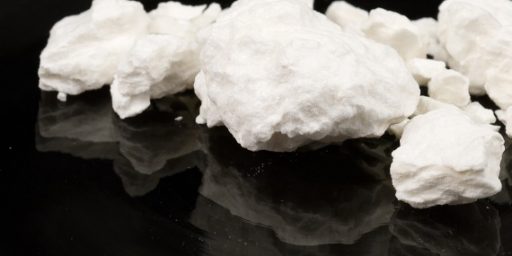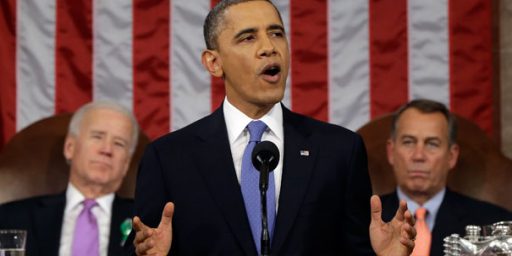Coca, Cocaine, and Cola
Plus some thoughts on prohibitionist policies (because sometimes a Quick Pick grows in the making).
 James Hamblin has an interesting little piece at the Atlantic: Why We Took Cocaine Out of Soda.
James Hamblin has an interesting little piece at the Atlantic: Why We Took Cocaine Out of Soda.
The piece does not contain any new information for those who are familiar with the history of intoxicants and prohibitionists policies in the United States.
The piece does, however, underscore two elements of this history.
First: the arbitrary (or, at least, hardly systematic) nature of the rules. For example:
But as Pemberton’s business started to take off, a prohibition was passed in his county in Georgia (a local one that predated the 18th Amendment by 34 years). Soon French Wine Coca was illegal — because of the alcohol, not the cocaine.
Pemberton remained a step ahead, though. He replaced the wine in the formula with (healthier?) sugar syrup. His new product debuted in 1886: “Coca-Cola: The temperance drink.”
Yes, the “temperance drink” was laced with cocaine. You really can’t make this stuff up.
Second: the role played by racism in creating these tiles. For example:
The same hypersexuality that was touted as a selling point during the short-lived glory days of Vin Mariani was now a crux of cocaine’s bigoted indictment. U.S. State Department official Dr. Hamilton Wright said in 1910, “The use of cocaine by the negroes of the South is one of the most elusive and troublesome questions which confront the enforcement of the law … often the direct incentive to the crime of rape by the negroes.” Dr. Edward Williams described in the Medical Standard in 1914, “The negro who has become a cocaine-doper is a constant menace to his community. His whole nature is changed for the worse … timid negroes develop a degree of ‘Dutch courage’ which is sometimes almost incredible.”
If one is familiar with the history in question, similar arguments were made in regards to Mexican migrant workers and marijuana and Chinese laborers and opium. A major driver in prohibiting those substances was concern that their consumption by minorities could lead to sexual assaults on white women. Of course, the linkage of drugs and wanton, uncontrollable sexuality can be seen in the infamous film Reefer Madness which featured predominately (if not exclusively) white actors.
It is worth noting, that the scare over crack cocaine in the 1980s had racial elements as well, since the drug was used primarily in inner cities. This lead to sentencing guidelines for crack that were substantially higher than was the case for powder cocaine (a drug predominantly used by whites). The only drug that I can think of that has been associated with whites in public relations campaigns and in the public consciousness has been crystal meth, as it is often associated with rural whites (although not exclusively).
In general, however, the basic narrative of drugs driving criminals crazy to the point that police cannot control them continues to the present day. A recent example would be concerns over the abuse of bath salts.
Note: I am not saying that people who use drugs are not often quite problematic for police to subdue, or that massive amounts of hallucinogenic stimulants never lead to violent criminal behavior. However, I am saying that fears of uncontrollable drug fiends is not a good way to make policy, and yet such fears are one of the rationales for the war on drugs (you know, the one that isn’t working).
Addendum: In many ways the basic point here is to note that, contrary to general belief, drug laws have not been made in a systematic, rational fashion. It is often thought that what happens is that lawmakers simply assess the relative harm of substances and classify them accordingly, but the truth of the matter is that this is not the case for many substances. This fact is not, per se, an argument for or against the laws in question but, rather, a good starting place for rational conversation about the policies in question.





Apropos of…well, nothing, on the night of the Junior-Senior prom my junior year of high school, I went to the drive-in with a couple of my buddies to see a double feature of Reefer Madness and M*A*S*H. We didn’t
haveneed no stinkin’ girlfriends!Drug laws unquestionably have not been made in a systematic, rational fashion.
The same holds true for many other laws.
Gun control laws have not been made in a systematic, rational fashion. And they’re self-defeating. The places with the very highest rates of gun violence are big cities with strict gun control ordinances. And every time the left pushes for more gun control legal firearms and ammunition sales skyrocket and illegal weapons further proliferate themselves.
Rent control laws have not been made in a systematic, rational fashion. And they’re self-defeating. The most gentrified and unaffordable places are those with long-standing rent control ordinances.
Employment discrimination laws have not been made in a systematic, rational fashion. And they’re self-defeating. Companies often simply don’t increase their ranks because of the liability and cost risks of prospective legal claims. And exactly what has “leveling the playing field” gotten us? It’s been four decades since Title VII. And as of December 2012 the unemployment rate for blacks was more than double the unemployment rate for whites.
Minimum wage and “living wage” laws have not been made in a systematic, rational fashion. And they’re self-defeating. Every time the minimum wage gets raised there nearly is an immediate and corresponding increase in the unemployment and underemployment rates for young racial minorities in urban centers.
The list goes on and on. Race preference laws. Taxes. Environmental laws. Etc. But obviously those “other items” don’t fit the narrative, as drugs do, ergo they don’t warrant a further “conversation.” At least not a rational one.
There’s also oxycodone (aka “hillbilly heroin”).
Sounds like something SuperDestroyer wrote.
I am of the opinion that the mini-panics over drugs like Ecstasy, Ritalin and Adderall are often derived from stories about drug use that good, suburban middle-class (i.e. white) kids are abusing.
@MM:
Don’t get me started on Ritalin.
Tsar types out a string of easily debunked talking points, hyperbole, and outright lies that he/she feels should be part of a “rational discussion”. Someone is off their meds.
@C. Clavin: Nah, that’s just a side effect of his constant jenkem use.
Anybody else remember PCP (angel dust)? That sh!t was the sh!t. Back in the lat eighties I collapsed a lung and ended up in the ER of the local public hospital. Got a front row seat to the “whack room” where they brought the dopers “whacked out” on PCP. I saw a couple of epic battles between cops, nurses and dopers. 5 or 6 cops and 2 nurses to one doper, trying to get him strapped down to a gurney.
Helped pass the 7 or 8 hours between arrival, diagnosis, emergency surgery, and arrival to my room where I finally got that first sweet shot of morphine. Didn’t make the pain go away, but I was enveloped in a warm golden glow and the pain? It was a beautiful pain…..
That sh!t scared the hell out of me.
@ Sejanus…
I didn’t know what that was…so I stuck it in the Google.
Thanks for that.
I guess that establishes Tsar as a Zambian street kid…which explains the extent of his/her insight.
@Davebo:
The problem (imo) is not Ritalin, the problem is that the average ADHD eval is inadequate. It used to take me hours to make such a diagnosis… interviewing the kid and the parents, talking to teachers/hockey coaches/choir directors, testing, etc. And, the 2 most most important aspects: I tried to determine the extent to which the child’s level of activity and/or inattentiveness exceeded that of others of the same age/sex AND whether the problems were interfering significantly in at least 2 aspects of the child’s life.
More typically, the MD simply has the parents fill out a questionnaire and bases the diagnoses on that.
When used correctly, with a child who actually has ADHD, stimulant medications can be very useful.
@Lynn: Thank you for clarifying all that.
When my son was diagnosed a couple years ago, it took three visits to a child psychologist and several different tests. There were questionnaires for us and for his teachers, interviews with we parents, written and computer-based tests for our son, an interview with him as well. The process took nearly a month. We’re confident we got a proper diagnosis.
Unfortunately, many times insurance doesn’t cover all this, and it is not cheap. We are fortunate that we could afford it, but many parents are not, and for them there’s little option other than a too-brief consult with the pediatrician.
so essentially, some people can handle their drugs- some can’t?! they should just decriminalize them, let the trash take itself out and the rec users enjoy the weekend.